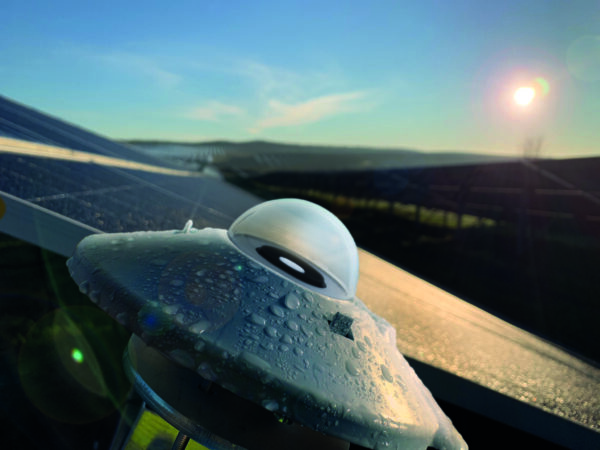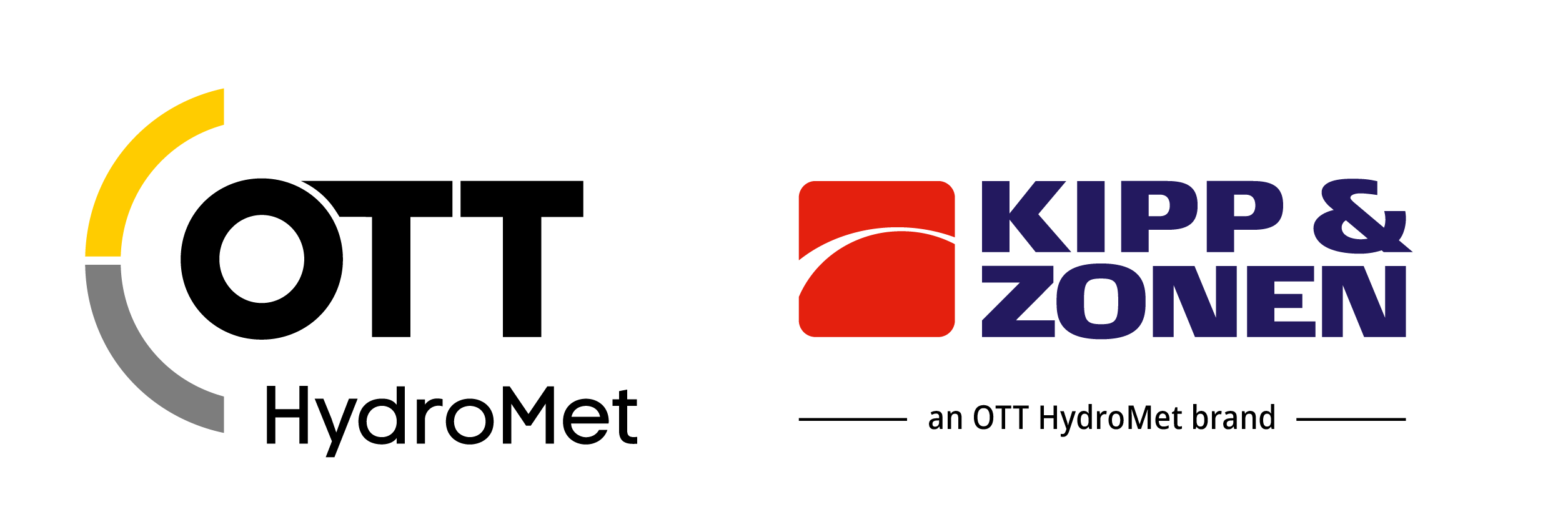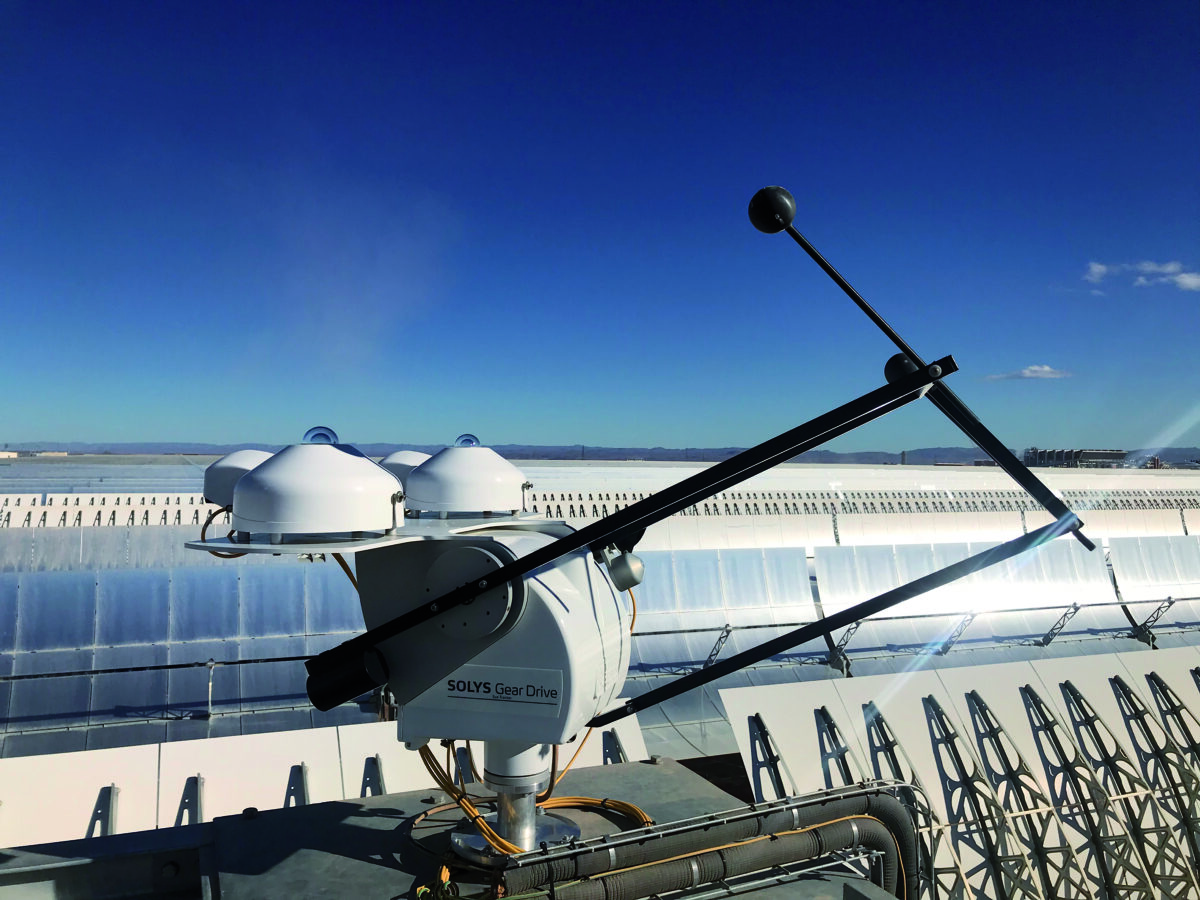To get the most out of a radiometer, pyranometer, pyrgeometer, and UV sensor, their optical domes need to be clean and dry. Water droplets can scatter incoming photons, while snow or dust blocks light on its way to the detector.
To ensure a constant measuring quality, Kipp & Zonen ─ a brand of OTT HydroMet since 2017 ─ had started early to develop systems that ventilate and heat their measuring instruments.
Now, based on 30+ years of experience, OTT HydroMet manufactures the Kipp & Zonen CVF4 ventilation unit. The unit ─ which can be easily mounted on all Kipp & Zonen pyrgeometers, ultraviolet radiometers, and CMP/SMP pyranometers ─ creates a steady air flow that keeps the quartz or glass dome clean from dust, dew, rain, and snow. The integrated heater prevents dew formation, disperses precipitation, and melts frost, ice, or snow on the dome.
The CVF4 unit has an operational temperature range of 20 to +70 °C and consumes 5 W continuous power for ventilation and 5.5 W power for heating when necessary. The tachometer output provides a 5 Volt signal that can be connected to a data logger to monitor the proper operation of the CVF4.
Proven under harsh conditions
CVF4 ventilation units are already being used globally, especially for stations within the Baseline Surface Radiation Network (BSRN), in colder regions with a lot of dew or precipitation ─ such as the Finnish Meteorological Institute (FMI), which already uses the CVF4 and its predecessor models ─ and in dusty areas.
More from our partners
“The Kipp & Zonen ventilators have proved to be reliable and weather-resistant and are adequate to keep frost and snow away,” says Olli Mantikka, solar technician at the FMI. “All in all, I am very pleased with the long-term performance of the units.”
In very cold regions, external ventilation units remain the best solution to keep the radiometer domes clean. In rather moderate climates, there is another option: A new generation of pyranometers provides integrated heating that melts snow and evaporates dew on the dome. One of them is the new Kipp & Zonen SMP12, which combines solid-state dome heating, with no moving parts, and best-in-class surge protection. It also features internal sensors for the monitoring of the tilt angle and humidity.

Image: OTT HydroMet
Joop Mes, Senior Scientist at OTT HydroMet, says, “The SMP12 fulfills all the requirements stated in the international standard for solar irradiance monitoring, ISO 9060:2018. It is a Class A pyranometer, spectrally flat, and has a fast response time of less than 0.5 seconds.”
This is relevant for PV plants, Mes says, because “If the clouds move quickly and cast shadow on the PV modules, fast response pyranometers can give nearly real-time irradiance information to reliably determine the performance ratio. Traditional pyranometers need about five seconds to respond.”
In the end, only clean domes give reliable readings. The choice between external ventilation units and pyranometers with integrated heating depends on the actual application and region.
This content is protected by copyright and may not be reused. If you want to cooperate with us and would like to reuse some of our content, please contact: editors@pv-magazine.com.



By submitting this form you agree to pv magazine using your data for the purposes of publishing your comment.
Your personal data will only be disclosed or otherwise transmitted to third parties for the purposes of spam filtering or if this is necessary for technical maintenance of the website. Any other transfer to third parties will not take place unless this is justified on the basis of applicable data protection regulations or if pv magazine is legally obliged to do so.
You may revoke this consent at any time with effect for the future, in which case your personal data will be deleted immediately. Otherwise, your data will be deleted if pv magazine has processed your request or the purpose of data storage is fulfilled.
Further information on data privacy can be found in our Data Protection Policy.